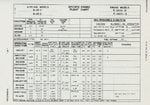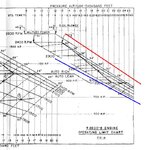After some looking, I've found the table of R-2600-13. The 'emergency maximum' (military rating) is stated as 1700 HP both for low and high blower, ie. @ 4.5kft and 12kft altitude respectively. Was that true?
(I do know that 12kft was not that high altitude anyway, but it beats contemporary V-1710 by some 50%)
(I do know that 12kft was not that high altitude anyway, but it beats contemporary V-1710 by some 50%)



